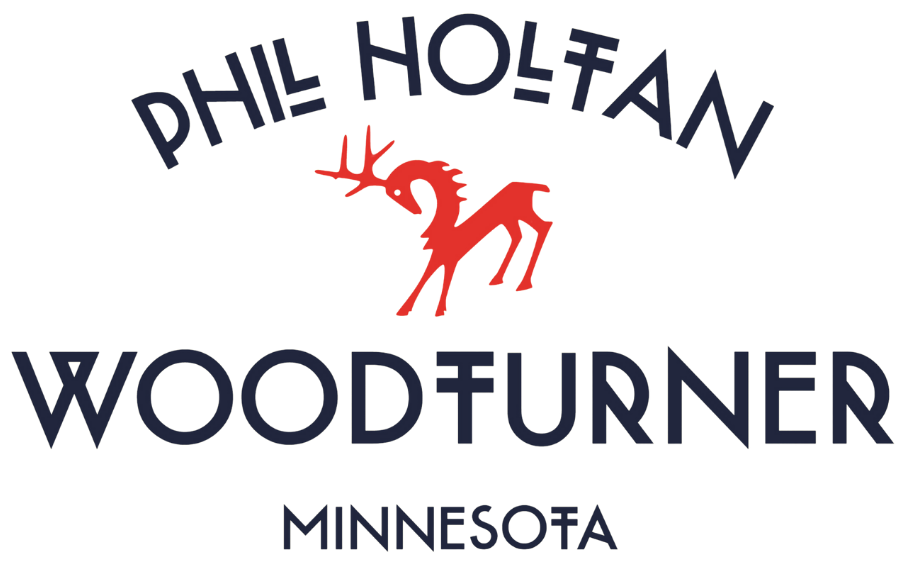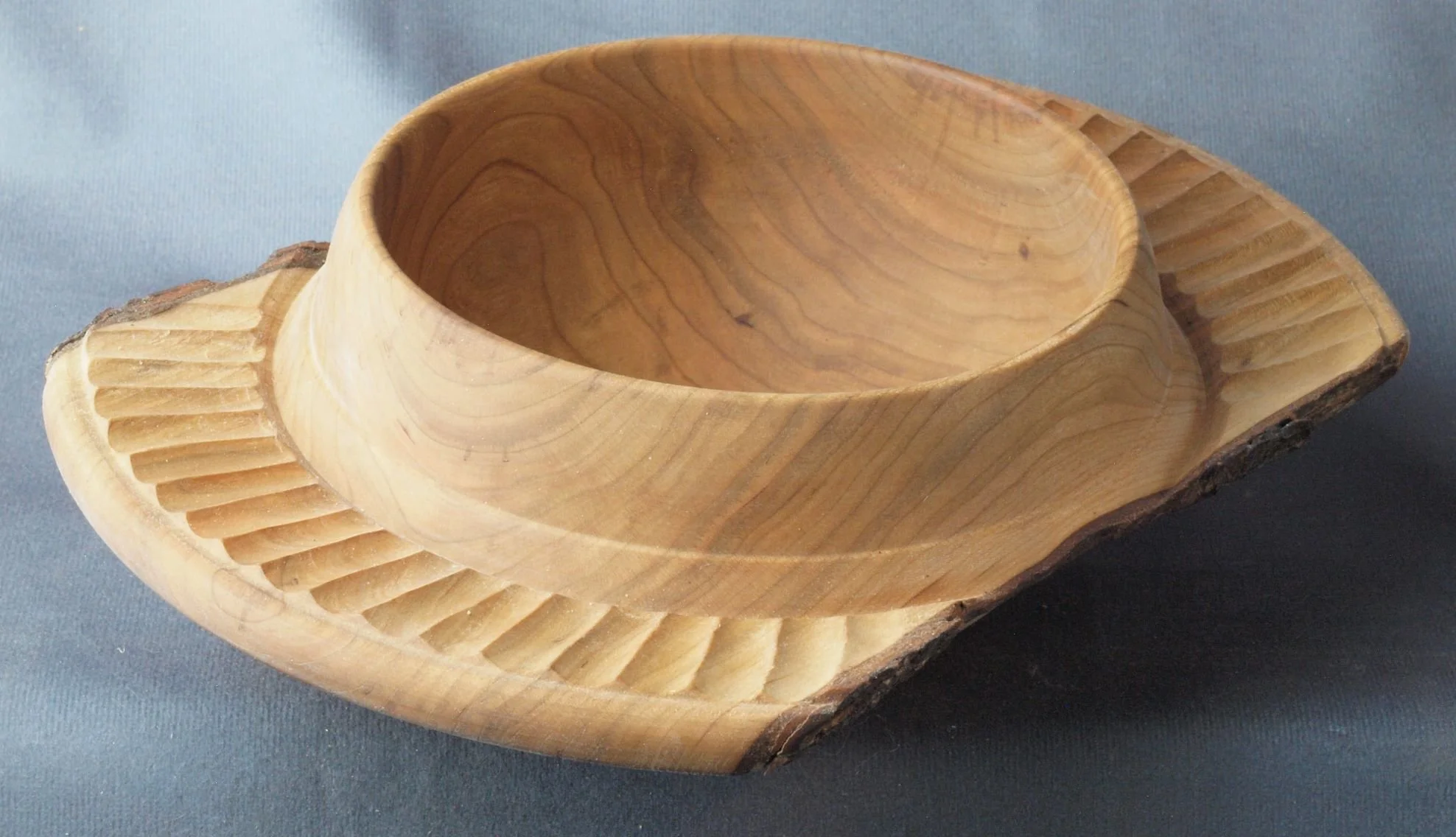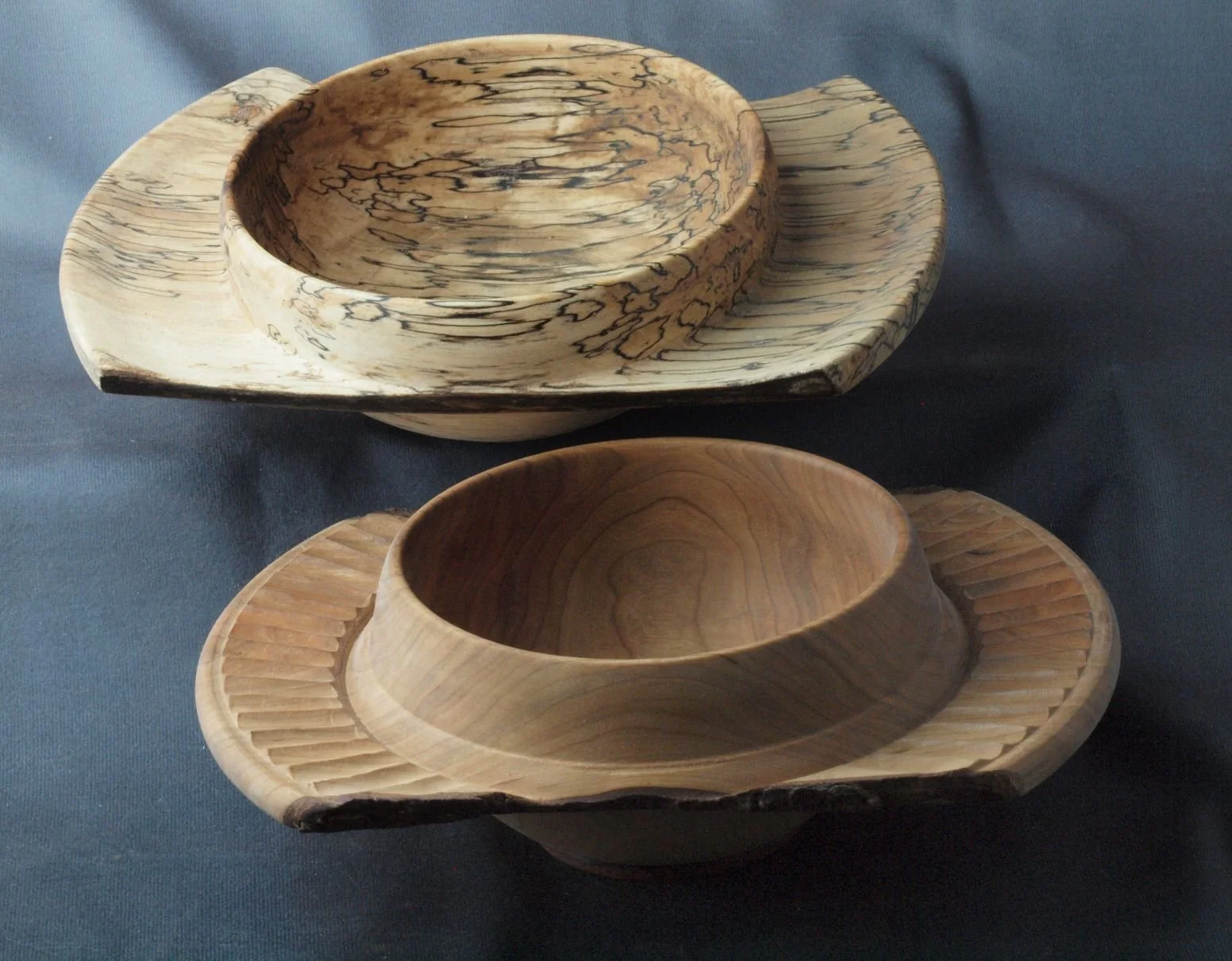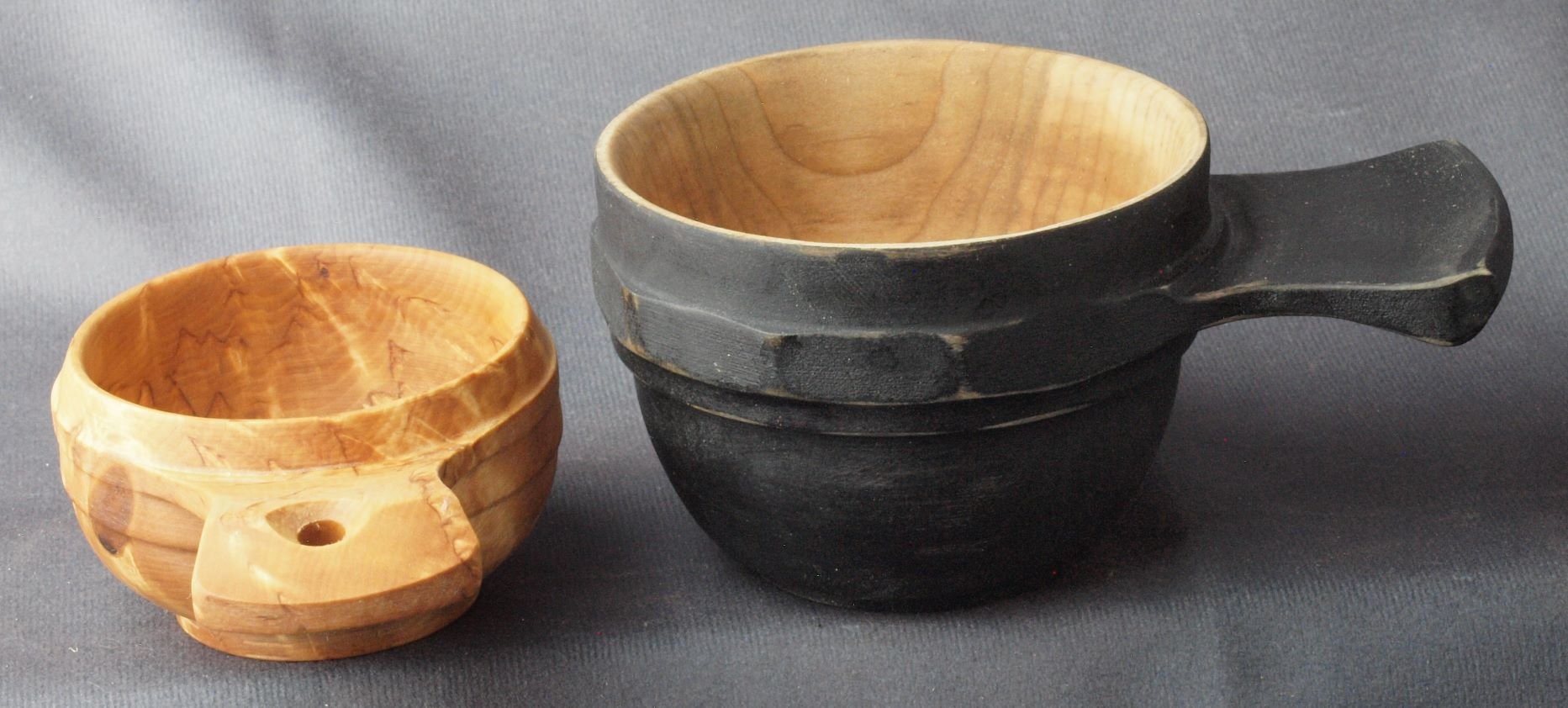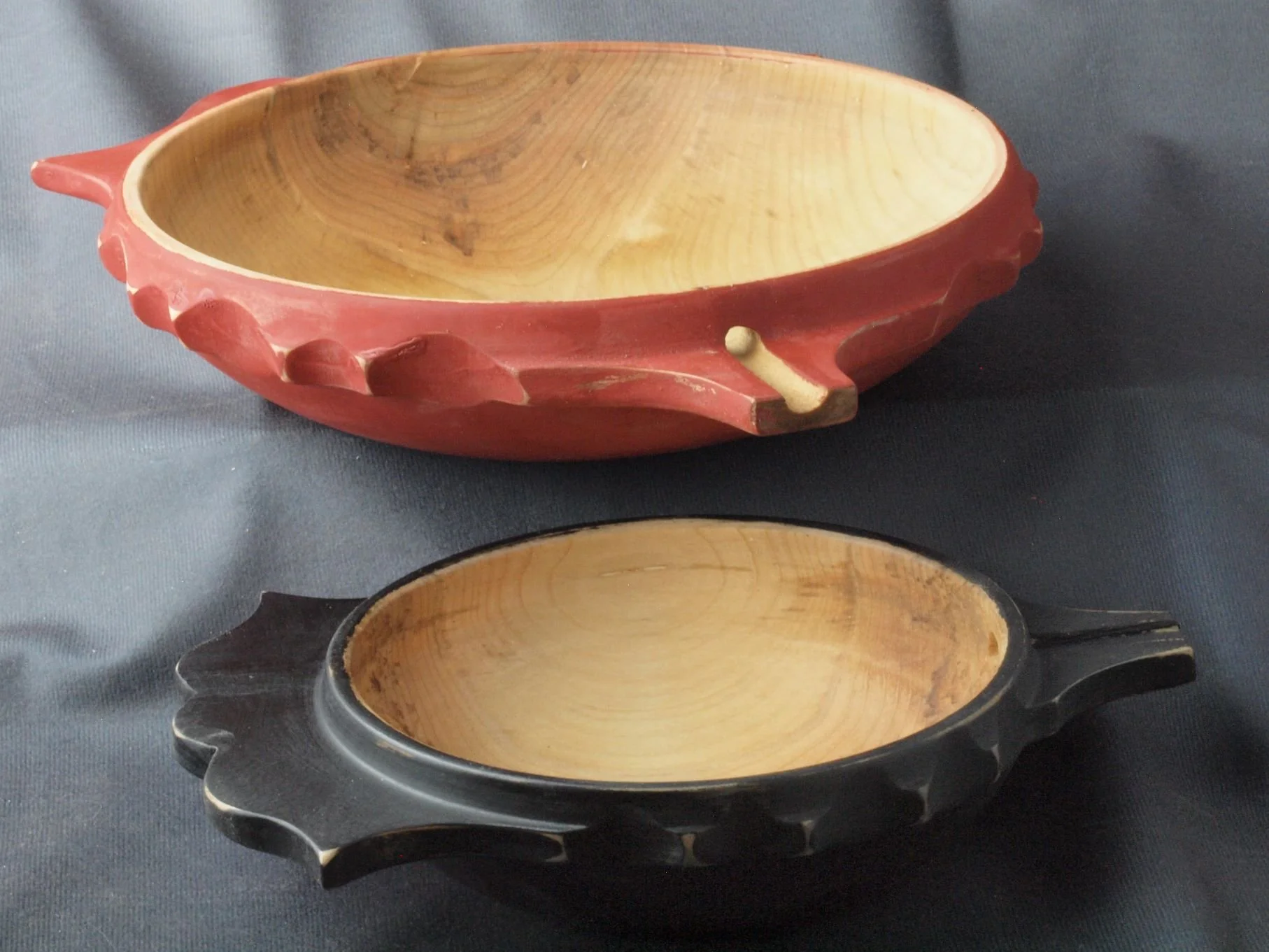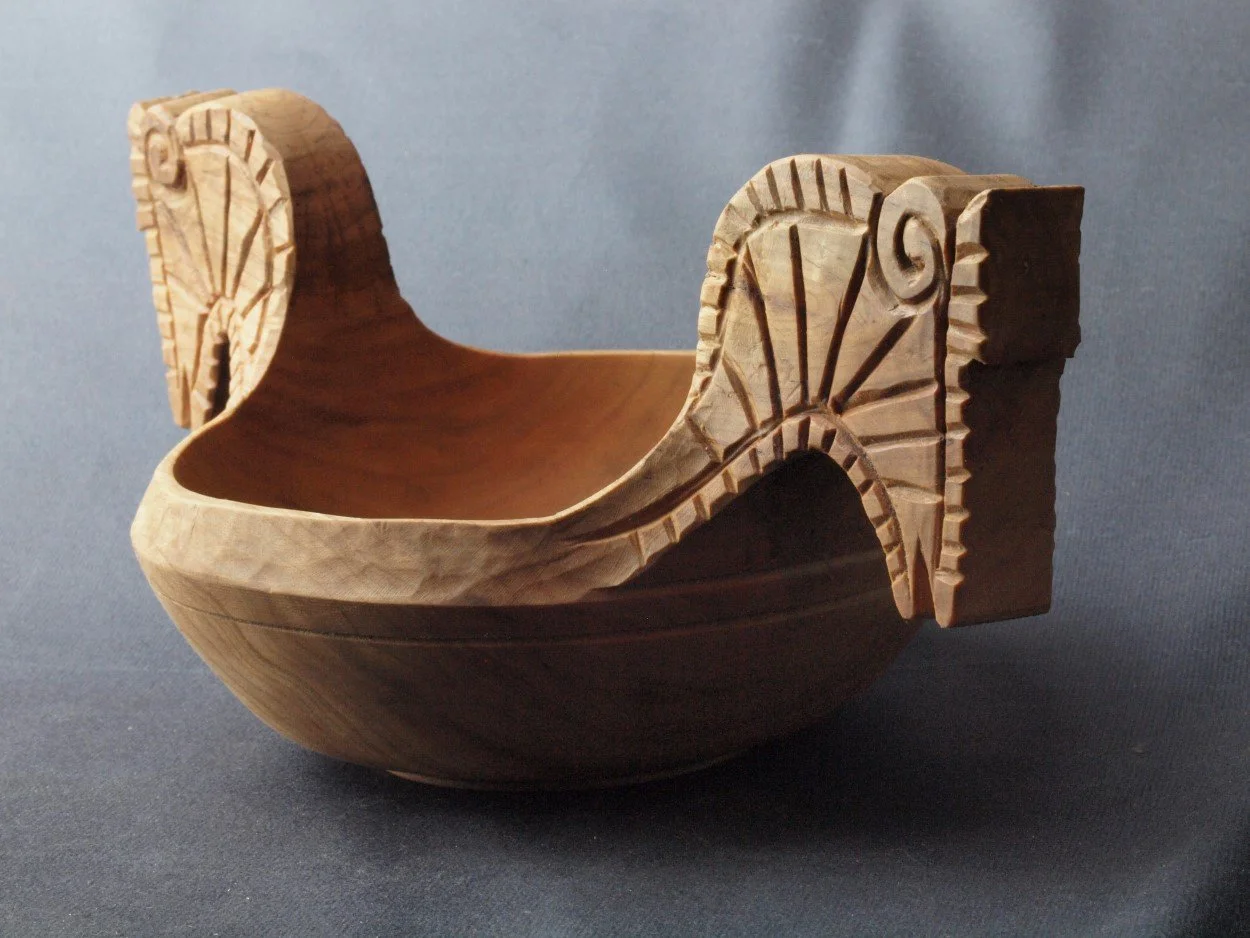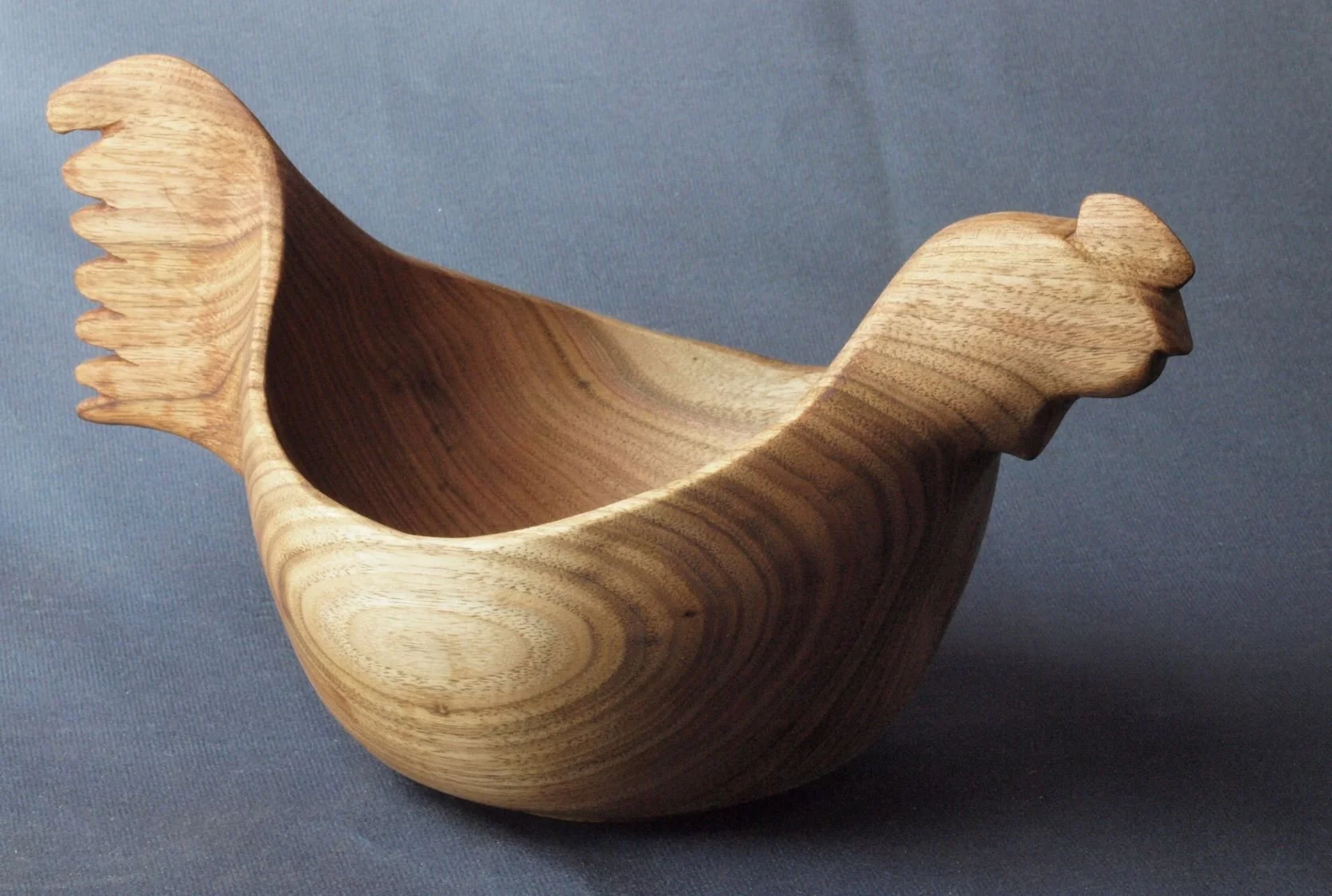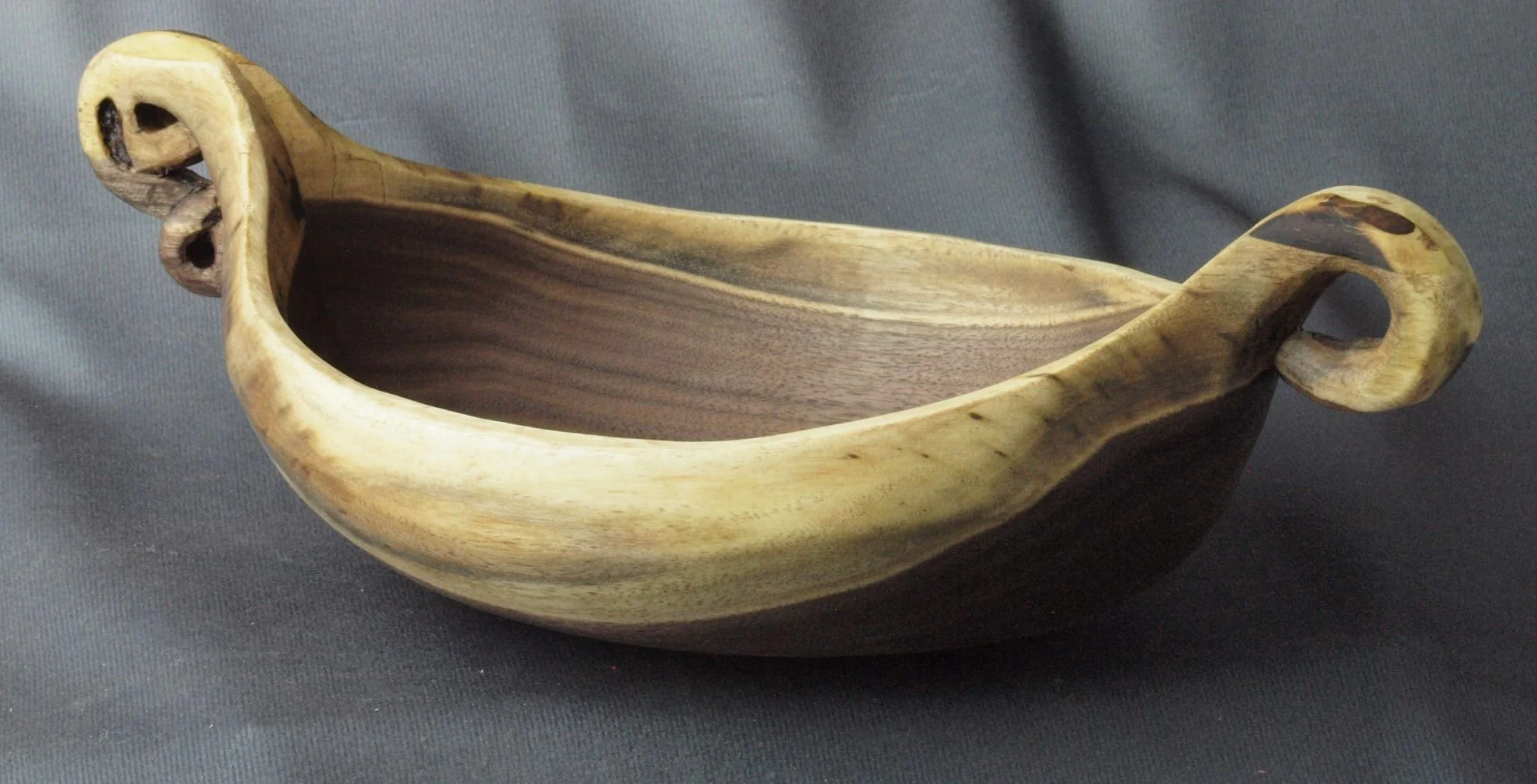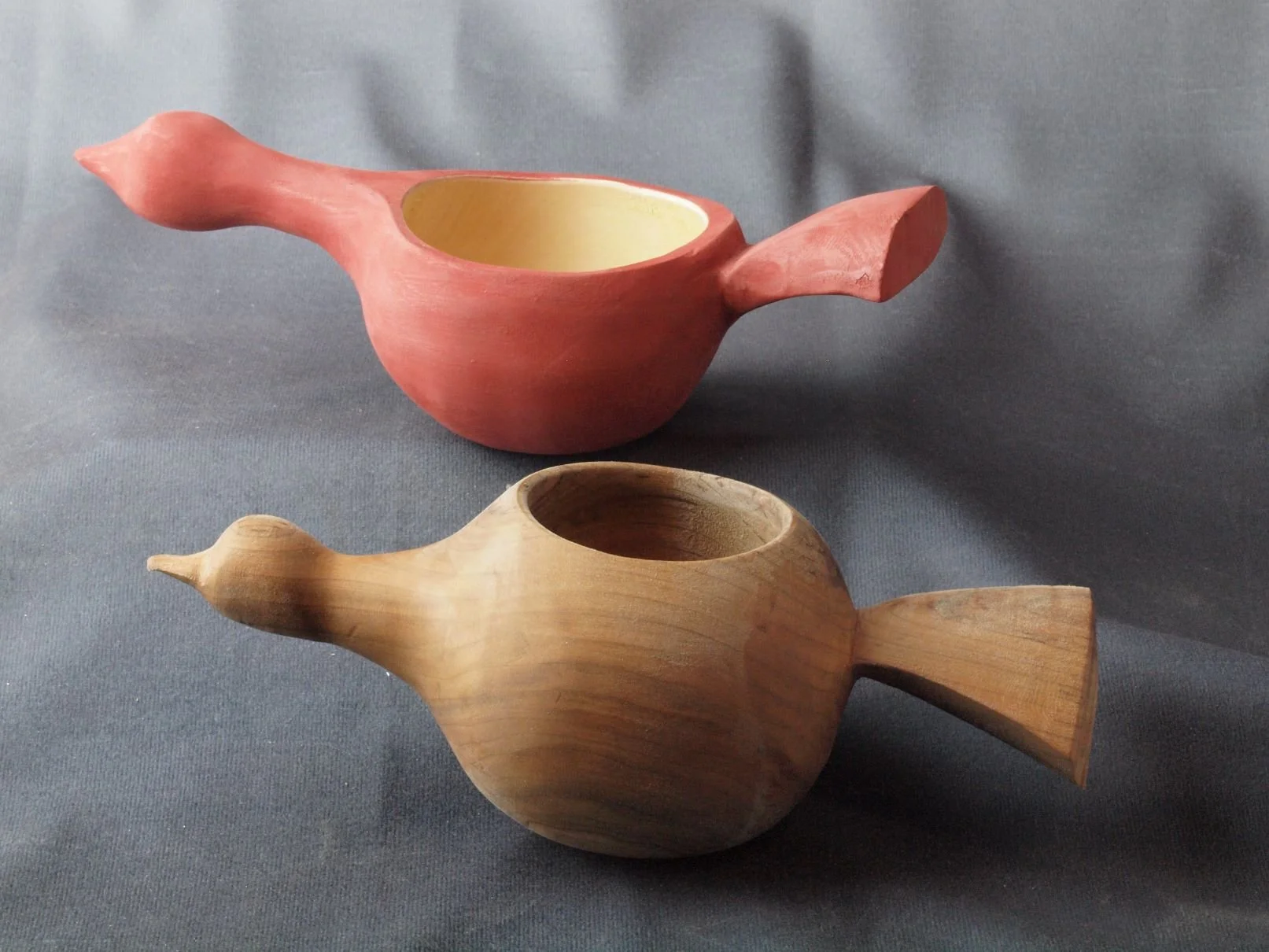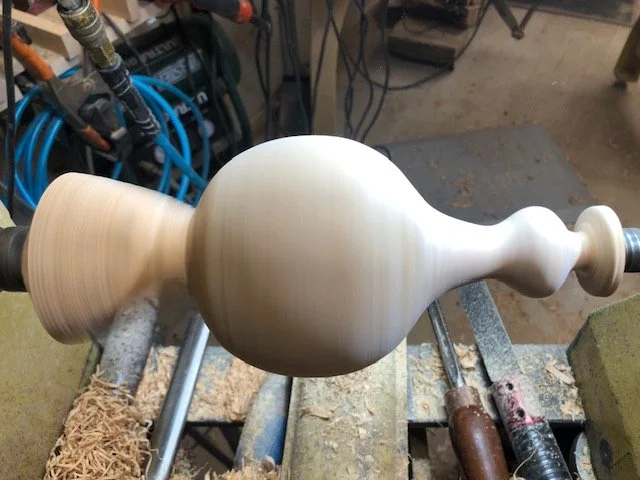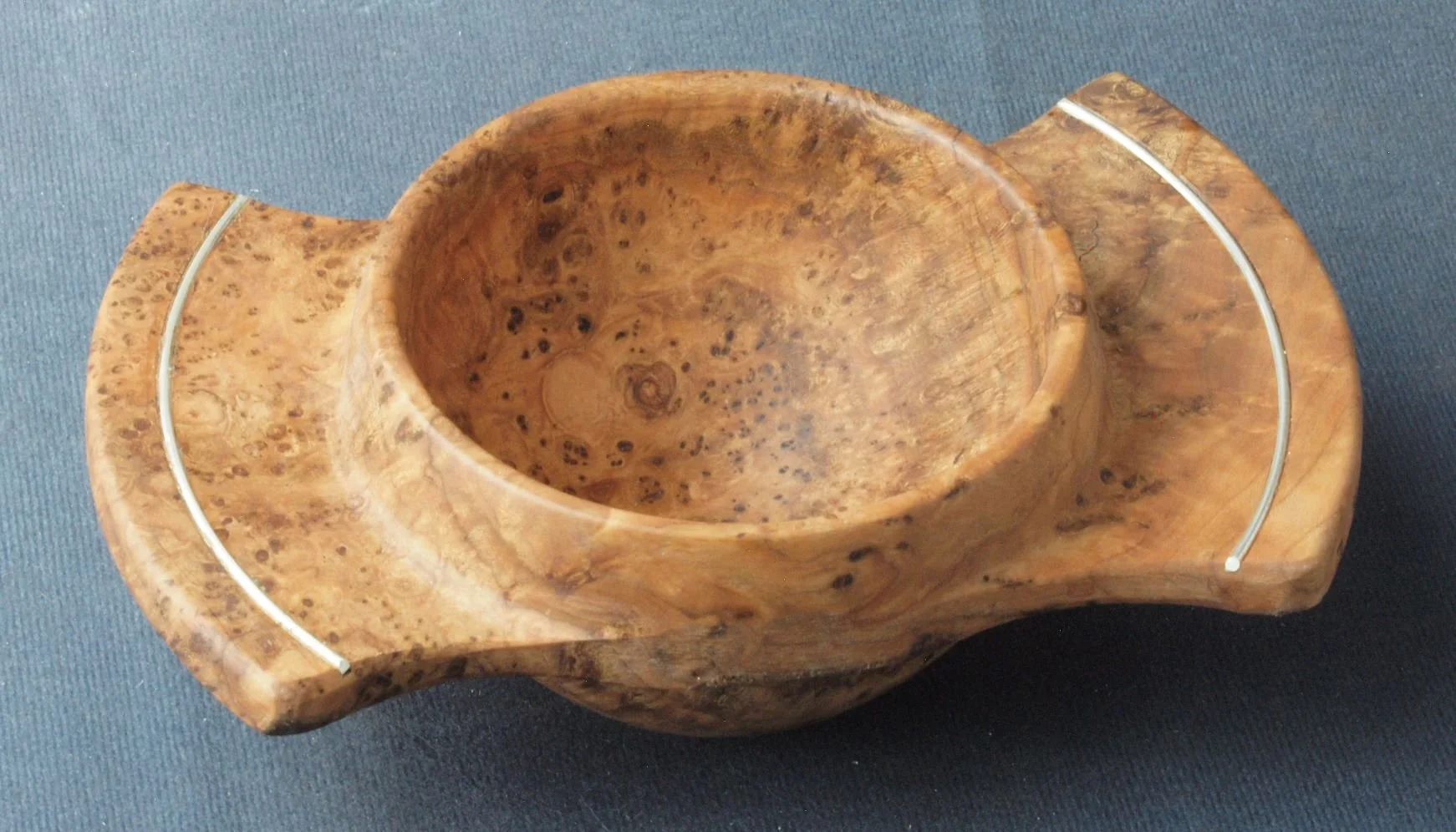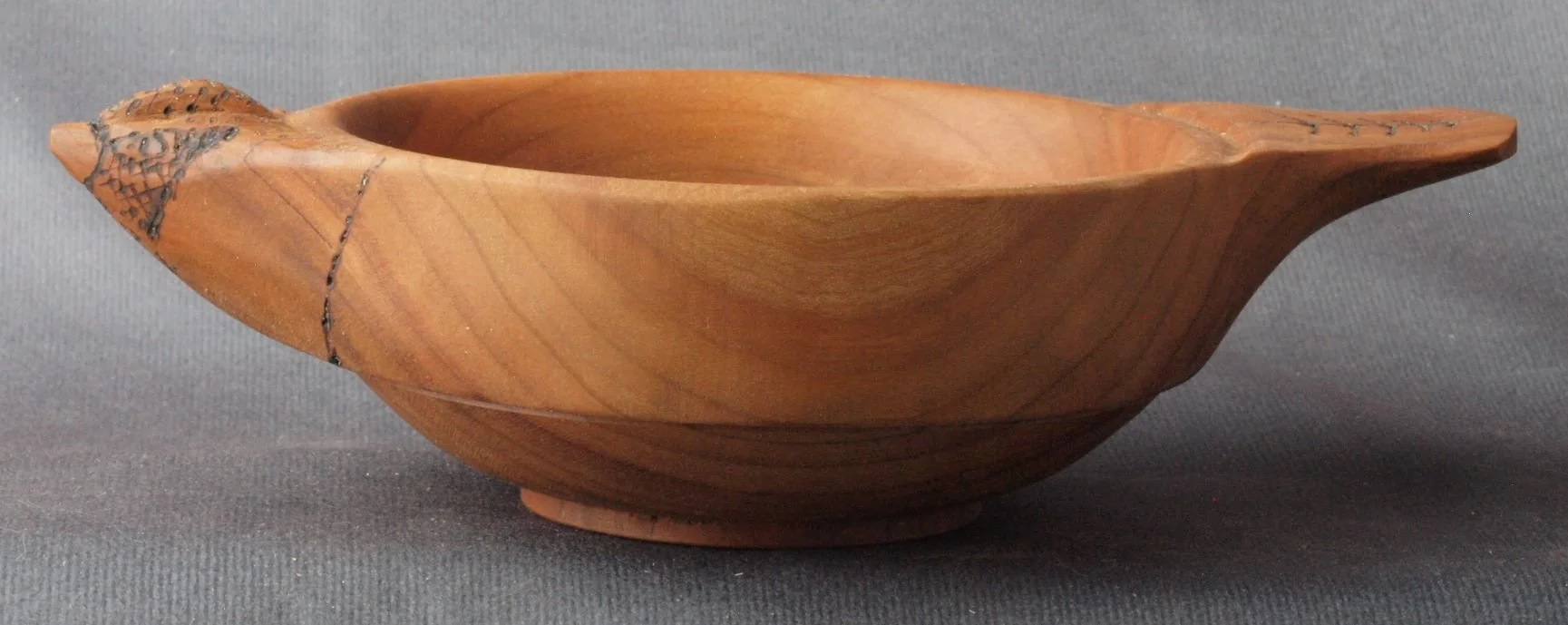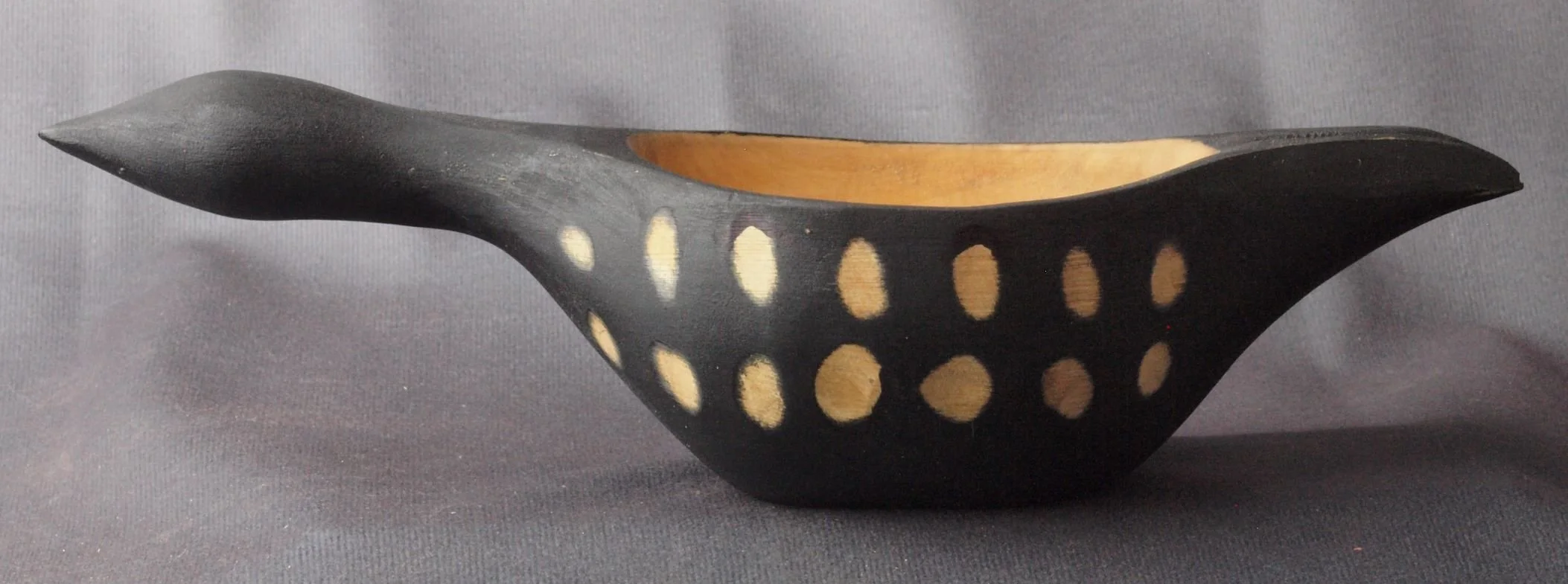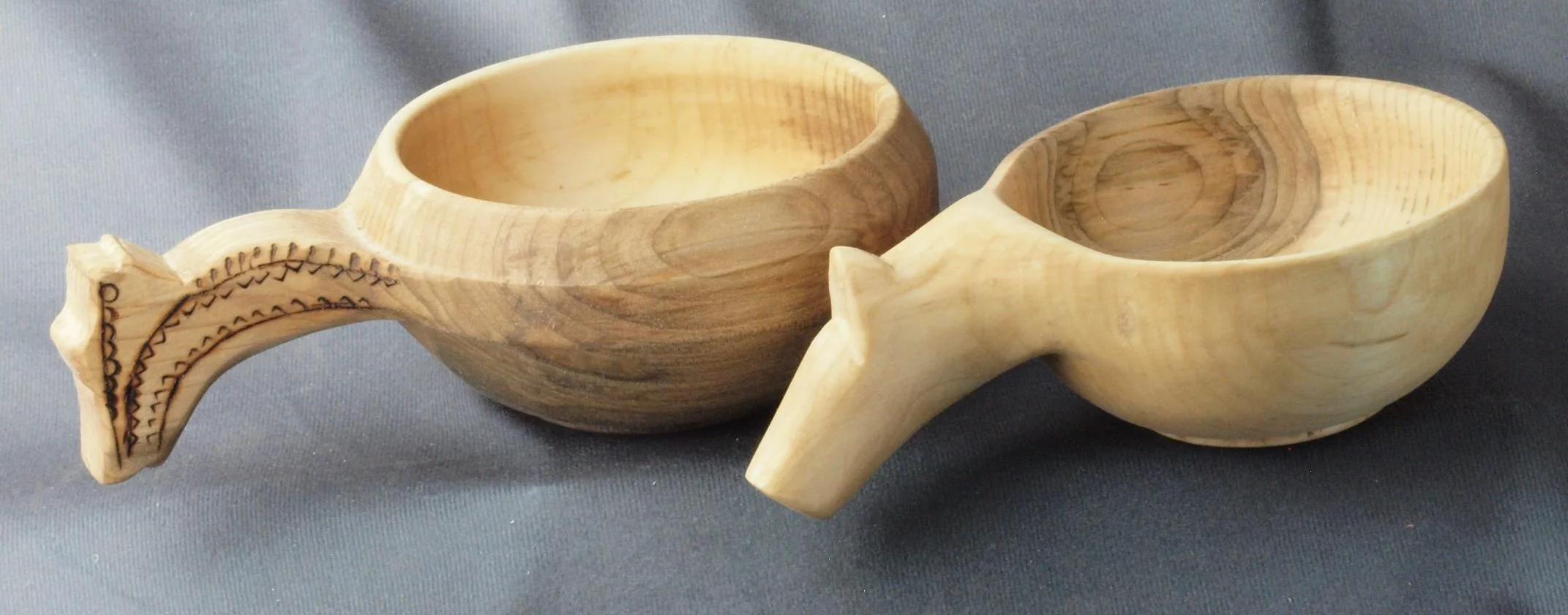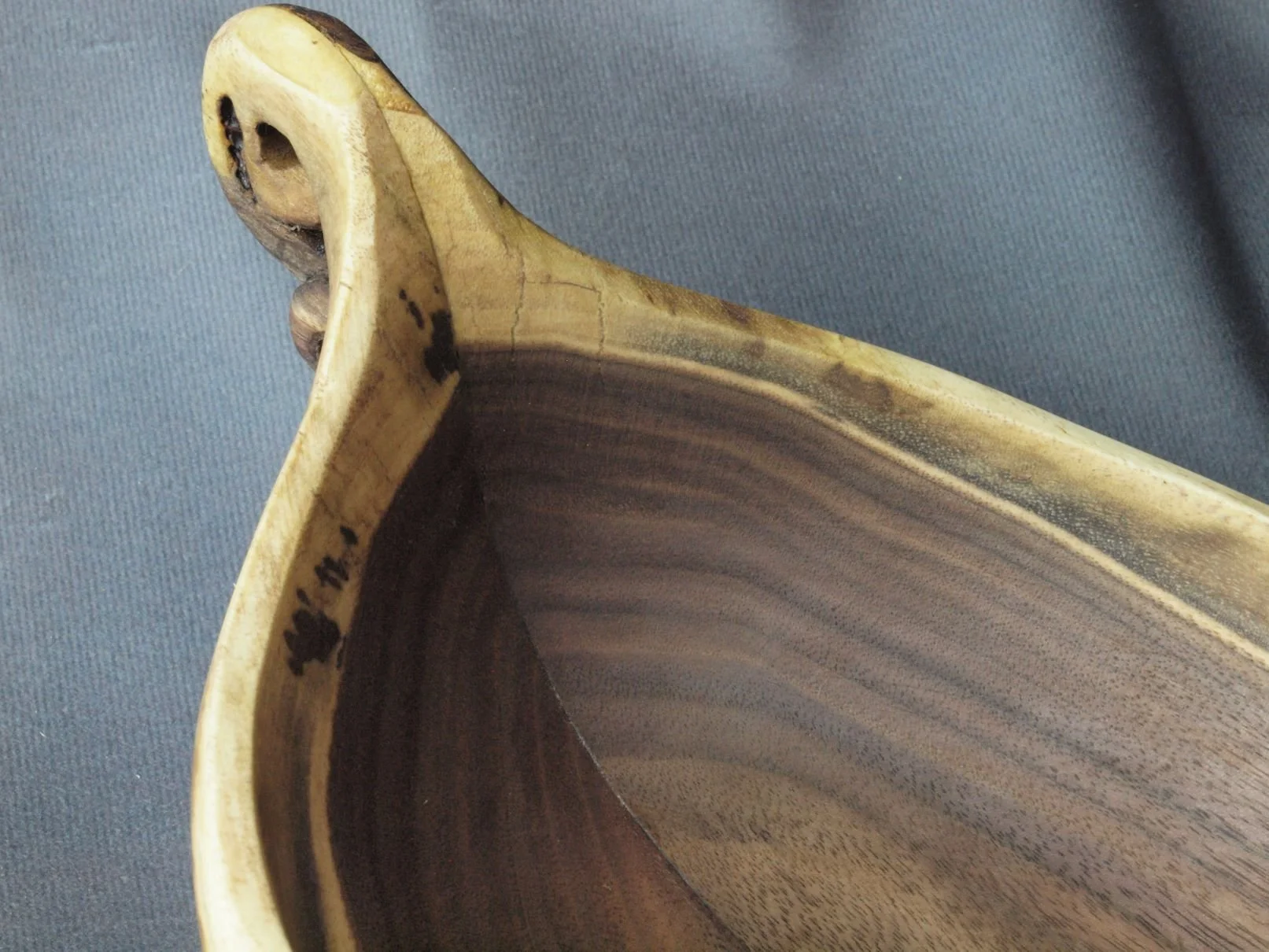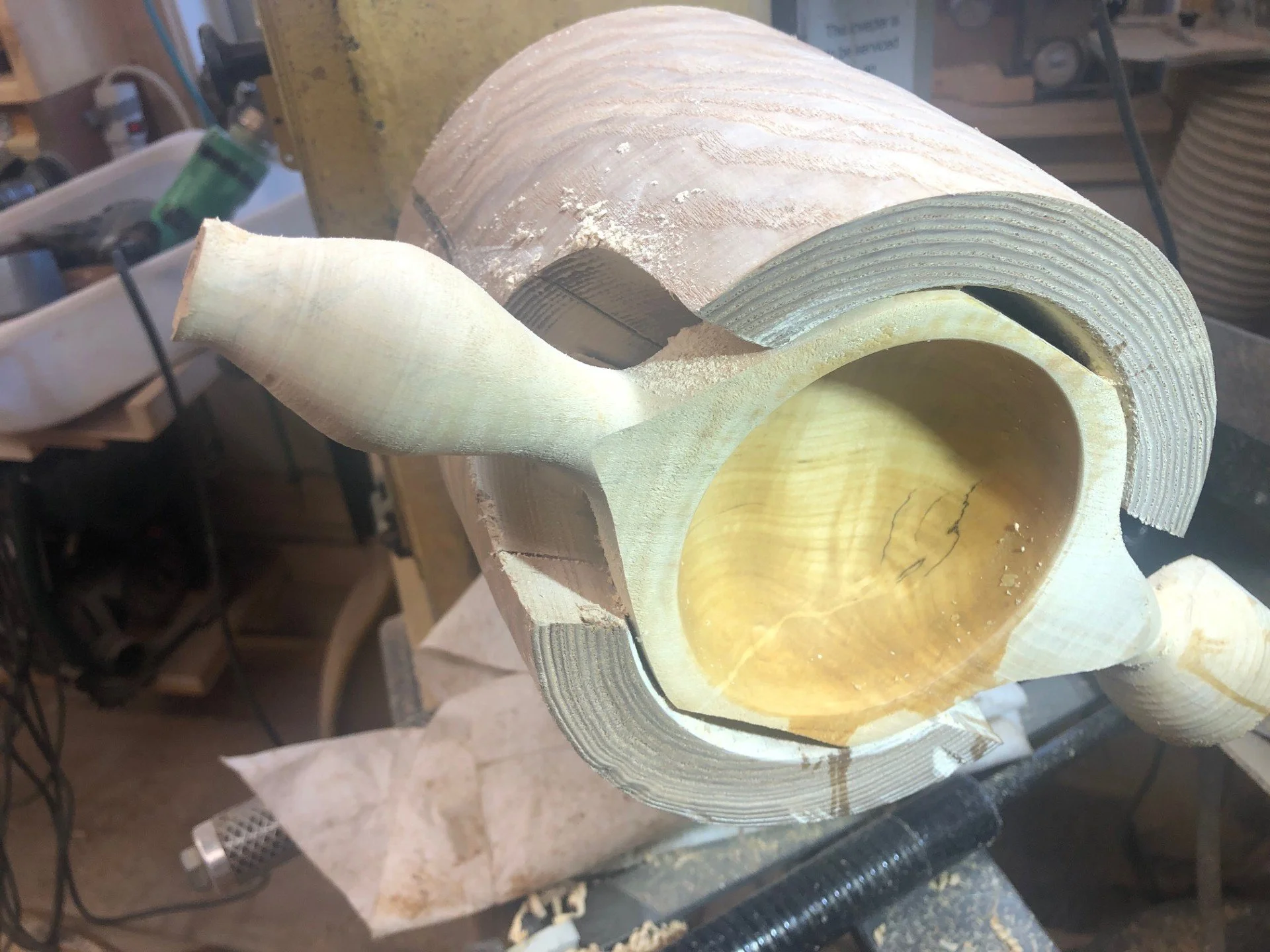I love ale bowls, especially when we “Skol the Bowl,” passing it from person to person to build community. I’ve turned ale bowls for a few years, but in preparation for a presentation to the Minnesota Woodturners, I have had a great time experimenting with new styles, and I’ve decided there are three kinds of ale-bowl-turning. More on that later. I’m exploring whether I want to make and sell more kinds of ale bowls. Part of that exploring is seeing how much of the ale bowl I can turn on the lathe and not carve. I’ve found that is a lot.
I first learned to “skol the bowl” with fellow artisans at Scandinavian Fairs. Pour some beer in the bowl and pass it around a circle of people, with each taking their turn to share a blessing or tribute, anything short and thoughtful, then saying “Skol,” taking a sip and passing the bowl.
At a birthday party, we each shared a tribute or memory with my sister. It’s like a talking stick as the one with the bowl gets to talk… and no one else. The handle on the bowl makes it work great for handing from person to person. Keep adding beer, passing the bowl around again and even shy Norwegians will share their deepest feelings.
Now, we’ve had a pandemic, and I can’t imagine passing a bowl like we used to for 25-30 people to “Skol the bowl.” So my plan is threefold: shrink your bubble to those who you trust to share, offer smaller containers to pour ale into but still do the sharing, and continue “skoling the bowl.”
A bit of historical context may be helpful
In rural parts of old Norway, ale was brewed to mark two kinds of events: annual events like harvest-time and Christmas, and those marking special personal events, like weddings and funerals.
· The ale bowl represented the farm and the land in ritual processions like weddings or funerals and was carved from wood from the land, filled with ale brewed from farm water and barley.
· The ale bowl belonged with the farm, and usually stayed when the farm was sold
· It led the wedding processions from groom’s house to bride’s house to the church to the couple’s home
· The bride was expected to throw a small bowl over her house! If the bowl did not make it over the roof, she could expect bad luck. As ale bowls were drained during the reception, guests tossed coins into the bowls as thanks for the celebration.
· After a death, neighbors and friends came to the home with gifts of food or ale. They stood in a ring around the casket and sang three hymns, with ale passed around between each. Then the mourners carried the casket outside, placed an ale bowl upon it, and drank a final toast to the deceased.
· One tradition is that you can determine your future by gripping and flipping the ale bowl- first taking the bowl between your teeth and flipping it back over your head onto the ground. If the bowl lands upright, it is a good omen; if not, change the subject.
· The two headed bowl, known as a kjenge, pronounced “Shanga” was used especially on the west coast of Norway. The horse was a fertility symbol, and the extreme arched neck and mane marks a stallion.
· Many would have been rosemaled, a traditional form of decorative folk art which originated in Norway.
· Many Northern European countries have their own communal drinking bowls- skol in Norway, wassail in England, quaich (quaig) in Scotland, lagom, “enough” bowl in Sweden. Also, loving cup for couple.
· Here are 3 very good video sources: YouTube by Phil Odden, carver and maker of ale bowls. https://www.youtube.com/watch?v=hjjJOS3IwQk
· https://sitesandstories.wordpress.com/2010/03/28/ale-bowls-migration-of-a-tradition/ Carol Hasvold, “Festive Events and Drinking Customs.”
· Vesterheim Collection Connections: Ale Hens and Geese with Becky Lusk https://www.youtube.com/watch?v=OX-tUdUOeHs
Turning ale bowls: I turn the bowls I make and sell from a variety of woods: apple, cherry, maple, butternut, anything with interesting and closed grain, definitely not ash or red oak. Rinse the bowl with water after use but don’t use the dishwasher or leave it sitting in water or full of water. Renew the finish with mineral or vegetable oil.
To me, the best ale bowls have substantial handles to make them easy to pass, but any bowl with a narrow, easy-to-drink-from rim can be used, and it should have a moisture and food safe finish. I like Mahoney’s Walnut oil and a final finish with a beeswax mixture to penetrate and seal the wood. I prefer to twice-turn and thereby relieve the stress on my ale bowls, because with ale in them, they will be stressed. I wish I had a finish that had more shine to it.
Let me give a few pointers for making the two bowl styles above, both my designs that I have in my sales catalog on this webpage.
Norwegian skol with carved sunburst and bark-edged handles. I turn the bowl by first pounding my center into the flat side of a half log, carefully finding the center end to end and side to side. As I shape the outside using normal bowl turning technique, I turn to keep the bark just outside the bowl itself. I don’t finish turn the bowl now because I will turn the bowl in two steps- rough turning and then finish turning, carving and sanding. The reason I do this is to make the wood more stable and less likely to crack when liquid is added. There’s a trade-off here. Green wood carves easier but twice-turning for stability makes me turn and carve drier and harder wood.
I use a #7 X 3/8 gouge for carving. Make sure you angle the handle slightly down toward the bowl so you can cut downhill on the grain, then gouge and orient the cuts to the middle of the opposite side of the bowl. I found the Mahoney’s walnut oil I use to wet-sand the bowls also soaks and lubricates the dry wood for carving.
To wet sand, I use the walnut oil to soak the area I’m sanding, then choose my sandpaper to start, usually 120 grit, and put a few drops of oil on the sandpaper to lubricate, then go to sanding. I suggest you use good grades of sandpaper, with something besides paper to back up the grit. Move up through the grits, sanding with the lathe stopped at time, especially on the wings of the ale bowl.
Scottish quaich (quaig)- The Scots would tend to share whisky (no “e” in Scotland). I use cherry burl wood for a premium look and because the bowls are smaller. Quaiches are often silver or contain silver to ward off evil spirits so I inlay silver accents. I turn the quaich just like I turn the skol above except that there is no bark on the burl blank so I center the bowl in the blank and then give the edges a shape later. I oil and wet sand before cutting the groove so the oil keeps the glue from penetrating alongside the notch. I cut a notch (less than 1/16 deep) in the handle with my 1/16” parting tool and then cut and glue (medium super glue, not too much) 14-gauge half-hard round silver wire (about a dollar an inch on Amazon) into the slot and clamp them. I remove the pads on clamps to give more focused clamping and then trim the ends when dry.
Shaped edge ale bowls- That would include the Skol and Quaich above, as well as Turkopps, a traditional Norwegian product that means tour cup, often with a leather cord tied into the handle. I also include the bird-shaped pouring bowls below, and some more experimental pieces that merge into the two-ended category, but generally with only one end. That is the vintage horse-head and the Dala horse-head cups below.
A. Two-ended Ale Bowls:
· Two-headed horsehead “Kjenge” ale bowl (West Norway along the sea)- the challenge is to turn as much of the project as possible before finishing with carving or sanding. I used German ring-turning ideas to turn the horse head profiles, a ¼ inch bandsaw blade to cut away excess wood and carving tools or a spindle sander to shape the rest of the shape. Another has a Swedish Dala Horse profile in spalted birch, with more sanding than carving. See the3 image below of the two headed horsehead bowl on the lathe, with the heads just trimmed in the bandsaw and awaiting more carving.
· Hen ale bowl (Telemark), with the two ends different, butternut wood. Turn the larger tail profile first for both ends, then remove excess wood to shape the head. Do some minimal shaping of the tail and head.
· Viking ship ale bowl: In order to get a more boat-like, tapered shape, I use a Stephen Hogbin idea to turn, cut away and reglue to turn the Viking ship ale bowls. Notice the glued seam in the close up of the Viking ship. Carve the dragon head and tail. I’m not pleased with this dragon head. It comes from the Urnes dragon-style designs and isn’t that clear or engaging, or scarey.
Two Axis Ale Bowls are the most complicated and even difficult to picture the process. I learned from the Canadian turner Michael Hosaluk how to do two turnings at right angles. It’s a technique often used for kitchen ladles and spoons but I love it for the possibilities here.
So far I’ve turned Flying bird ale bowls-I like turning birds, because they are aerodynamic end to end, which works well with woodturning. Use a homemade chuck to hold the blank at right angles. Since these birds look best if their head and tail axis is in line with the top of the bowl/body, I turn only a half body of wood. You can see the ungainly duck below has a humpback not found in nature. I especially like how the loon turned out, with the axis very high in the bowl. I used my spindle sander to make the white spots, just touching the wood.
